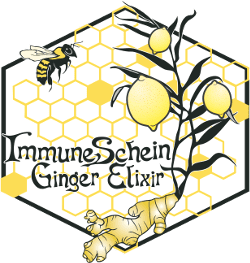
Turmeric History
Turmeric is a bright yellow root grown throughout India. This earthy rhizome is part of the ginger family and has been used extensively by Ayurveda, the traditional medicinal system of India. For over 4,500 years, turmeric has been prepared for culinary and medicinal purposes.
Nearly the entire world’s supply of turmeric comes from India—where about 80% of it is consumed. The famous golden spice is also widely used in South Asian and Middle Eastern cooking.
Turmeric’s principal active ingredient, curcumin, has powerful antioxidant and anti-inflammatory properties. While inflammation is the body’s way of protecting itself against invaders and plays a role in repairing damage, excessive, long-term inflammation can become a problem. It then becomes chronic and begins to attack the body’s tissues.
Turmeric Benefits
Over the centuries, turmeric was (and still is) used in different herbal preparations in folk medicine and was known to help alleviate wounds and bruises. It has even been used as a paste to treat various skin conditions. Ayurvedic and traditional Chinese medicine use turmeric to treat inflammatory conditions, skin diseases, wounds, digestive ailments, and liver disorders. One study revealed that turmeric worked as well as ibuprofen (Advil) for people with arthritis in their knees. Eastern medicine has long reported the benefits of using turmeric to help digestion. Western medicine is beginning to study how turmeric can address gut inflammation and permeability, which significantly impact digestion.
In addition to containing manganese, iron, potassium, and vitamin C, turmeric
has also been believed to . . .
-reduce blood pressure.
-support the liver.
-relieve arthritis.
-alleviate asthma.
-promote digestion.
-support energy levels.
Fun Fact: In ancient Ayurvedic texts, turmeric is referred to by many names, such as jayanti, meaning “one who is victorious over diseases.” Other known names for it include hridayavilasini (“gives delight to the heart”), varna datri (“enhancer of body complexion”), and hemaragini (“gives the golden color”).
Our Turmeric Ginger Elixir
ImmuneSchein's Turmeric Ginger Elixir contains one additional ingredient to our ImmuneSchein Classic Ginger Elixir’s three potent ingredients—organic lemon juice, organic ginger root, and wildflower honey. We extract organic turmeric root at the same time as the ginger root, which has been awarded a Good Food Award for its ingredients, taste, and practices as a business. With our ImmuneSchein Ginger Elixirs, we’ve chopped, sliced, and prepared for you. So all you have to do is add the elixir into hot water for a tea, cold water for a lemonade, sparkling water for a ginger ale, or even add with apple cider vinegar to create your own fire cider. The flexibility of our elixirs allows you to create many different recipes for drinks, cocktails, mocktails, cooking, baking, and more. With digestion-enhancing ginger, detoxifying lemon, and weight-loss-promoting honey, this potent drink is sure to kick-start your day.
Sources:
https://www.pbs.org/food/the-history-kitchen/turmeric-history/
https://misuse.ncbi.nlm.nih.gov/error/abuse.shtml
https://www.healthline.com/nutrition/top-10-evidence-based-health-benefits-of-turmeric
https://www.medicalnewstoday.com/articles/306981
